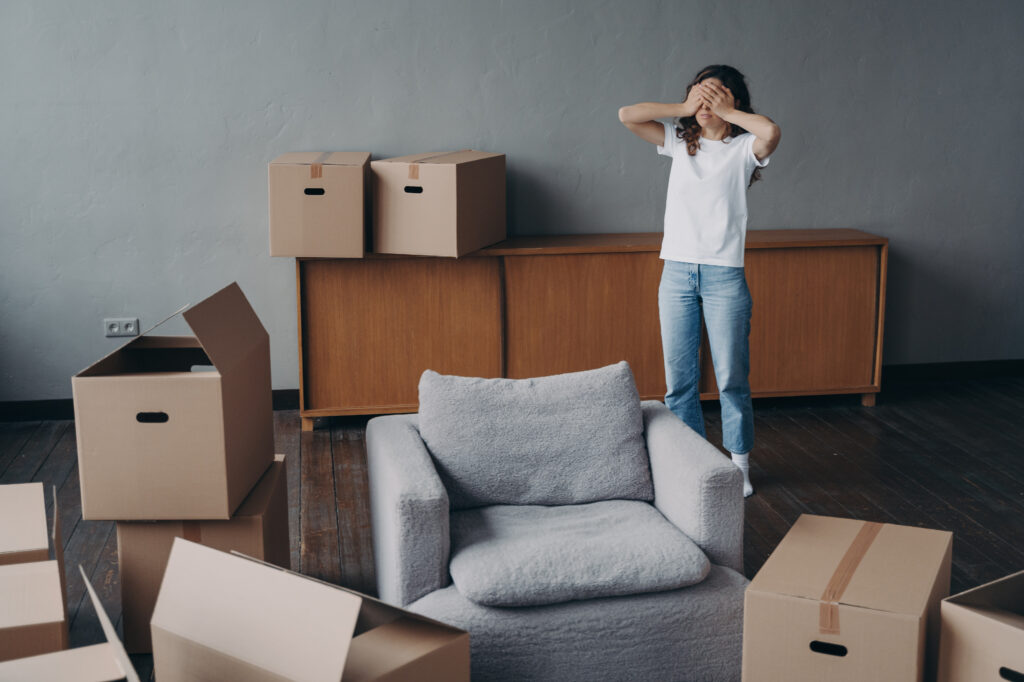Get Settled with Ease: A Step-by-Step Plan for a Smooth Relocation
Moving can be a daunting task but it doesn’t have to be. With the right planning and preparation, you can achieve a smooth relocation.
This blog post will provide a step-by-step guide on how to plan for a successful move, so that you can settle into your new home with ease. With helpful tips and a detailed plan, you can ensure that your relocation goes as smoothly as possible. So read on!
Assess Your Moving Needs

Assessing your moving needs is an essential first step in planning a successful relocation.
Before you dive into the logistics of the move, take some time to evaluate your specific requirements and preferences. This will help you make informed decisions throughout the moving process.
Start by considering the size and type of your move. Are you moving from a small apartment or a large family home? Do you have any special items that require extra care, such as fragile antiques or a piano? Understanding the scale and complexity of your move will allow you to allocate the necessary time, resources, and support.
Next, think about your timeline. Are you in a rush to move or do you have a more flexible schedule? Keep in mind that peak moving seasons, such as summer, can be busier and more expensive. Planning ahead will give you the advantage of securing preferred moving dates and potentially lower costs.
Consider your budget for the move as well. Moving expenses can quickly add up, from hiring movers to purchasing packing supplies. It’s important to set a realistic budget and explore cost-saving options, such as DIY packing or renting a moving truck instead of hiring full-service movers.
Lastly, assess your own capabilities and availability. Do you have the physical strength and endurance to handle the moving process on your own, or would you benefit from hiring professional movers? Take into account any health concerns or physical limitations that may impact your ability to lift and carry heavy items.
Budgeting for Your Move

Moving can be an expensive endeavor, but with careful budgeting, you can keep your costs under control and avoid any financial surprises. In this section, we will discuss some essential tips for budgeting your move to ensure a smooth transition to your new home.
First and foremost, start by setting a realistic budget for your move. Consider all the potential expenses, including packing supplies, moving services, transportation, and any additional costs such as storage or insurance. Research and gather quotes from different moving companies to compare prices and find the best deal that fits your budget. Don’t forget to include any unexpected expenses that may arise during the move, such as meals or accommodation if needed.
Next, prioritize your expenses. Determine what aspects of your move are most important to you and allocate funds accordingly. For example, if hiring professional movers is a priority, allocate a larger portion of your budget to this expense. On the other hand, if you prefer to save money by packing yourself, invest in high-quality packing supplies to ensure the safety of your belongings.
To further save on costs, consider alternative options. If you have friends or family members with a suitable vehicle, you might be able to borrow it instead of renting a moving truck. Additionally, reach out to local schools, community centers, or online platforms to find free or low-cost moving supplies. Remember, every dollar saved is a dollar that can be put towards other important expenses during the move.
Lastly, be mindful of any hidden costs. Read the fine print and ask your moving company about any additional fees that may apply, such as fuel surcharges or extra charges for moving bulky items. Plan for these expenses in your budget to avoid any unexpected financial burdens.
Finding a Reputable Moving Company

Finding a reputable moving company is crucial to ensuring a smooth and successful relocation.
After all, you want your belongings to be handled with care and arrive safely at your new home. With so many moving companies out there, it can be overwhelming to choose the right one. But fear not, because we have some tips to help you find a reliable and trustworthy moving company that meets your needs.
First and foremost, do your research. Look for moving companies in your area and read reviews from previous customers. Pay attention to the overall ratings, but also take note of any specific feedback about their professionalism, punctuality, and handling of items. This will give you a good sense of their reputation and reliability.
Next, ask for recommendations. Talk to friends, family, and coworkers who have recently moved and ask about their experiences with moving companies. Personal recommendations are often the most reliable and can provide you with valuable insights and information.
Once you have a shortlist of potential moving companies, reach out to them and ask for estimates. A reputable moving company will be happy to provide you with a detailed estimate based on your specific needs. Be sure to ask about any additional fees or charges that may apply.
During your communication with the moving companies, pay attention to their level of professionalism and customer service. Are they prompt in their responses? Do they address your concerns and questions thoroughly? A good moving company will prioritize clear and effective communication to ensure a smooth and stress-free experience for their customers.
Finally, don’t forget to verify the moving company’s credentials. Make sure they are licensed and insured to protect your belongings during the move. You can also check if they are a member of any professional moving associations, as this indicates a commitment to industry standards and best practices.
Packing Up Your Belongings

Packing up your belongings is often one of the most time-consuming and challenging aspects of the moving process. However, with a well-organized plan and a few helpful tips, you can tackle this task like a pro.
First, gather all the necessary packing supplies. This includes sturdy cardboard boxes in various sizes, packing tape, bubble wrap, packing paper, and markers for labeling. It’s always better to have more supplies than you think you’ll need, as it’s easier to return unused items than scramble for more in the middle of packing.
Next, start with one room at a time. This will help you stay organized and avoid mixing up items from different rooms. Begin by packing non-essential items first, such as decorations or out-of-season clothing. Label each box with the contents and the room it belongs to. This will make unpacking much easier later on.
As you pack, be sure to use proper packing techniques to protect fragile items. Wrap breakable items individually in packing paper or bubble wrap, and use extra cushioning material, such as towels or blankets, to prevent shifting. Fill any empty spaces in boxes with packing material to prevent items from shifting during transit.
Don’t forget to pack a separate box with essentials for the first few days in your new home. This should include toiletries, a change of clothes, basic kitchen utensils, and any important documents or medications you may need right away. Keep this box easily accessible so that you can quickly find these essentials upon arrival.
Lastly, enlist the help of friends or family members if possible. Packing can be a time-consuming process, and having extra hands can make a world of difference. Plus, it can be a fun opportunity to spend time together before the big move.
Preparing Your New Home

After the chaos of packing up your old home and the anticipation of moving day, you finally arrive at your new place. But before you can relax and start settling in, there are a few important things to take care of to ensure a smooth transition.
First, do a thorough inspection of your new home. Check for any damages or issues that need to be addressed before you start moving your belongings in. This includes checking the plumbing, electrical systems, and any appliances that come with the property. Take note of any repairs or maintenance that needs to be done and make arrangements to have them taken care of as soon as possible.
Next, make sure your new home is clean and ready for you to move in. This may involve hiring professional cleaners or dedicating some time to do it yourself. Wipe down surfaces, sweep and mop the floors, and clean any windows or mirrors. Having a clean and fresh space will make the process of unpacking and settling in much more enjoyable.
Once your new home is clean, start by setting up any necessary utilities. This includes transferring or setting up electricity, water, gas, internet, and cable services. Contact the relevant service providers and schedule the installations or transfers to ensure that everything is up and running by the time you move in.
Finally, take some time to plan out the layout of your new home. This will help you determine where each piece of furniture and box should go. Measure the rooms and make a floor plan, taking into consideration any unique features or restrictions. This will save you time and effort on moving day, as you’ll have a clear idea of where everything should go.
Handling the Actual Move Day

The big day has finally arrived – it’s time to handle the actual move!
This is the day when all your careful planning and preparation comes into play. While it can be a hectic and overwhelming experience, with the right mindset and organization, you can navigate through it smoothly.
First and foremost, start the day off on the right foot by getting a good night’s sleep and having a healthy breakfast. You’ll need all the energy you can get for the tasks ahead. As the moving crew arrives, be sure to greet them with a friendly and welcoming attitude. It’s important to establish good communication and a positive working relationship from the start.
Before the moving process begins, take a few moments to walk through your old home one last time. Double-check that everything is packed up and ready to go. Once you’re satisfied, make your way to your new home to oversee the unloading process. It’s a good idea to have a copy of your floor plan on hand to guide the movers on where to place each box and piece of furniture.
As the movers unload your belongings, take the opportunity to check each item off your inventory list. This will ensure that nothing gets left behind or misplaced. If you notice any damages or missing items, be sure to communicate this to the movers and document it for insurance purposes.
Throughout the move, it’s crucial to stay organized and keep track of important documents and keys. Keep a designated folder or box for these items and carry it with you throughout the day. This will prevent any unnecessary stress or frantic searching.
Unpacking and Settling In

Once you’ve successfully completed the move and all your belongings have safely arrived at your new home, it’s time for the final phase: unpacking and settling in. This is your chance to transform your new space into a comfortable and familiar environment that truly feels like home.
Start by unpacking the essentials. Focus on setting up your kitchen and bathroom first, as these are the rooms you’ll likely need right away. Once those are in order, move on to other important areas such as the bedroom and living room. Take your time and be intentional about where you place each item, considering functionality and aesthetics.
As you unpack, be sure to organize your belongings effectively. Use designated storage areas and invest in storage solutions, such as bins, shelves, and drawer dividers, to maximize space and keep everything neat and tidy. Label boxes and bins to make it easy to find items later on.
While unpacking can be a tedious task, don’t forget to take breaks and reward yourself along the way. Celebrate each milestone by treating yourself to a cozy movie night in your new living room or a relaxing bath in your freshly set up bathroom. These small moments of relaxation and enjoyment will help alleviate any stress and make the unpacking process more enjoyable.
Lastly, take the time to explore your new neighborhood and connect with your new community. Go for walks, visit local shops and restaurants, and introduce yourself to neighbors. Getting to know your new surroundings will help you feel more settled and connected to your new home.
Ready to sell your property? Give us a call today and learn more about our professional photography services and marketing that can boost your property listing!
Plus, explore our virtual assistant coaching program to level up your business. Don’t forget to tune into our new podcast for even more valuable insights!
